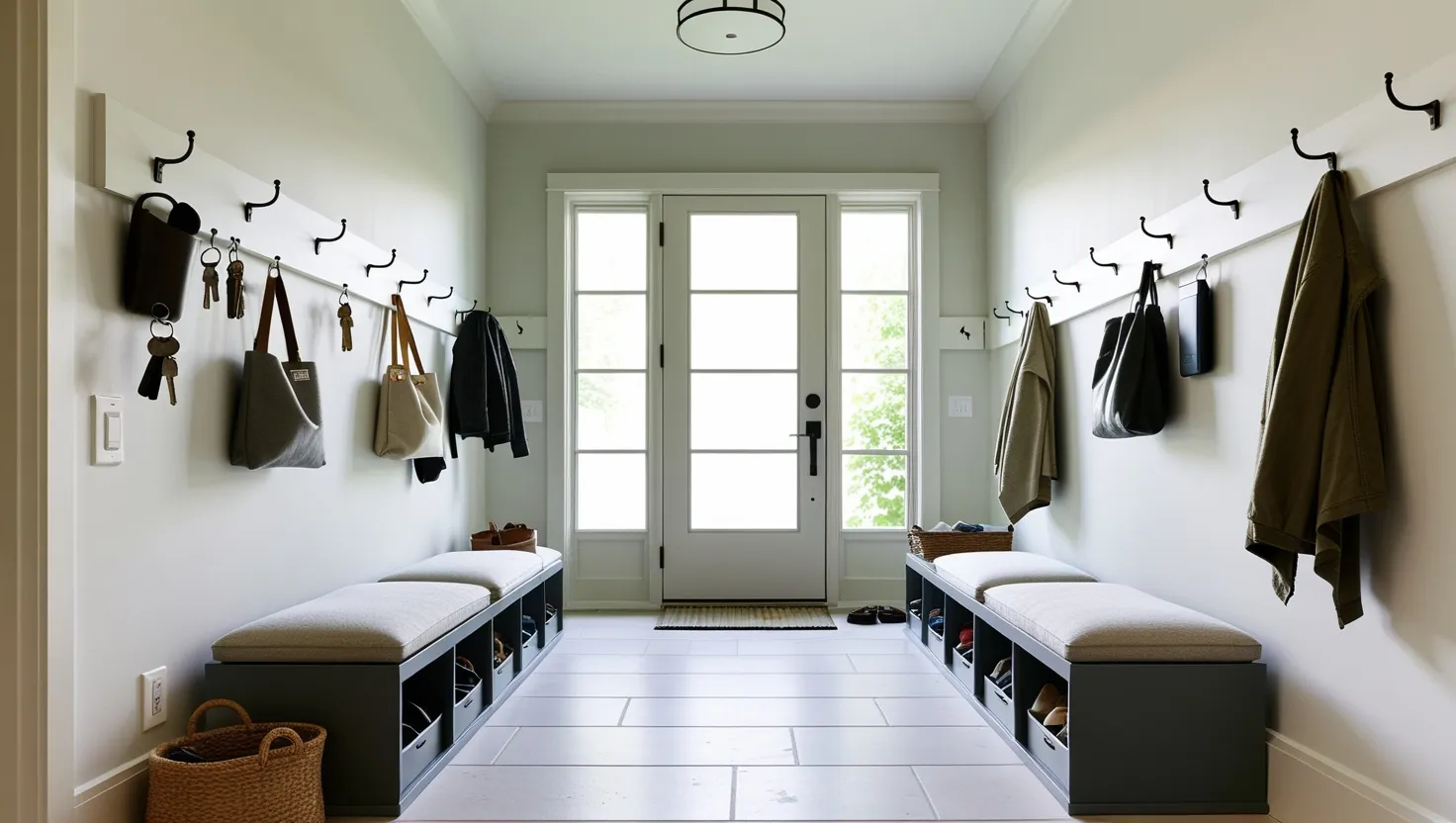Creating a home environment that runs smoothly and minimizes daily frustrations is a goal many of us share. Yet, it often feels elusive amidst the chaos of modern life. I’ve spent years refining systems to eliminate friction points in my own home, and I’m excited to share some practical approaches that have made a world of difference.
Let’s start with the entryway - that liminal space between the outside world and your sanctuary. It’s prime real estate for creating what I call a “drop zone.” This dedicated area serves as mission control for incoming items. No more frantically searching for keys or that important piece of mail. Everything has a place, right where you need it.
I recommend installing a series of hooks, cubbies, and small bins tailored to your family’s needs. Keys, wallets, sunglasses - give each its own home. A mail sorter keeps bills and correspondence organized. Designate a spot for shoes and backpacks. The goal is to make it effortless to drop everything in its place as soon as you walk in the door.
“For every minute spent organizing, an hour is earned.” - Benjamin Franklin
This quote rings especially true when it comes to entryway organization. A small upfront investment pays dividends in time and mental energy saved. How much time do you typically spend searching for misplaced items each week? Imagine reclaiming those precious minutes.
Moving deeper into the home, let’s tackle a modern source of stress - the dreaded dead battery. We’ve all experienced that moment of panic when a crucial device dies at the worst possible time. Enter the dedicated recharging station.
Centralize all your family’s devices in one location. I use a multi-port charging station tucked away in a cabinet, with labeled cords for each device. No more hunting for the right charger or arguing over outlets. Everyone knows exactly where to plug in, and devices are always ready to go.
This system eliminates what I call “battery anxiety” - that nagging worry about your phone dying mid-day. It’s a small change that yields big results in reducing daily stress.
Now, let’s talk about household essentials. How often have you run out of toilet paper, laundry detergent, or other crucial items at inopportune moments? It’s time to set up automatic reordering systems and say goodbye to those inconveniences.
I use a combination of subscription services and smart home devices to keep my household stocked. Amazon’s Subscribe & Save for regular deliveries of non-perishables. A smart trash can that reorders garbage bags when we’re running low. Even a connected water filter that ships new filters on schedule.
The key is to identify your most-used items and find a system that works for your family. It takes some initial setup, but the peace of mind is invaluable. No more emergency runs to the store or making do without essentials.
“The secret of getting ahead is getting started.” - Mark Twain
What’s one household item you frequently run out of? How could you automate its replenishment?
Let’s shift gears to family organization. In our hyper-scheduled world, keeping everyone on the same page is crucial. A unified family calendar system accessible to all members is a game-changer.
I recommend a digital solution that syncs across devices. Google Calendar or Apple’s iCloud are great options. Create separate calendars for each family member, color-coded for easy viewing. Include everything from work schedules to school events, doctor appointments to social engagements.
The magic happens when everyone can see and update the calendar in real-time. No more double-bookings or forgotten commitments. It takes some getting used to, but once it becomes habit, you’ll wonder how you ever managed without it.
For families with younger children, consider a physical calendar in a central location as well. This visual representation helps kids understand time and schedules. Plus, it’s a great way to countdown to exciting events.
Finally, let’s address a universal source of frustration - misplaced items. Keys, remote controls, glasses - these small but essential objects have a knack for disappearing at the worst times. The solution? A standardized location system.
Designate a specific “home” for commonly misplaced items and stick to it religiously. Keys always go on the hook by the door. Remotes live in the basket on the coffee table. Glasses have a dedicated spot on the nightstand.
For items that tend to wander, consider using technology. Bluetooth trackers like Tile or Apple AirTags can be lifesavers. Attach them to often-lost items, and you can locate them with your smartphone.
The key is consistency. It might feel tedious at first, but soon it becomes second nature. The time and frustration saved is well worth the effort.
“Have a place for everything and keep the thing somewhere else; this is not advice, it is merely custom.” - Mark Twain
Twain’s humorous take reminds us that organization doesn’t always come naturally. It’s a habit we must cultivate. What’s one item you frequently misplace? Where could its permanent “home” be?
Implementing these systems takes time and effort, but the payoff is substantial. Imagine a home where everything runs smoothly, where daily frustrations are minimized, and where you can focus on what truly matters.
Start small. Choose one area to focus on and build from there. Maybe it’s creating that drop zone or setting up the family calendar. As you see the benefits, you’ll be motivated to tackle other friction points.
Remember, the goal isn’t perfection. It’s about creating systems that work for your unique family and lifestyle. Be willing to adjust and refine as needed. What works for one household may not work for another.
As you implement these changes, involve the whole family. Explain the benefits and get their buy-in. Assign responsibilities and celebrate successes together. A smoothly running household is a team effort.
In the end, a zero-friction home environment isn’t just about saving time or reducing stress. It’s about creating space for what truly matters - connection, creativity, and joy. By eliminating those small daily frustrations, you’re freeing up mental and emotional energy for the things that bring real fulfillment.
So, I challenge you: identify one friction point in your home and take action this week. It might be as simple as designating a spot for keys or setting up automatic reordering for your most-used household item. Small steps lead to big changes.
What area of your home life causes the most daily friction? How could you apply one of these approaches to smooth things out? The journey to a zero-friction home starts with a single step. Why not take it today?






